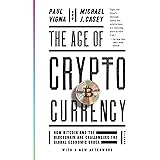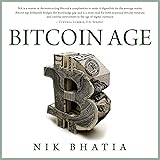Have you been questioning the true state of the cryptocurrency market, wondering if the next major surge, often dubbed “Altcoin Season,” is truly upon us? As the accompanying video vividly illustrates, many seasoned experts and market observers are revising their outlooks, asserting that this particular crypto cycle diverges significantly from its predecessors. This comprehensive analysis will expand upon the video’s insights, delving into the critical data points and institutional shifts that underscore an increasingly bullish sentiment for digital assets, particularly altcoins.
Understanding the Unprecedented Shift in Crypto Dynamics
Unlike previous cycles driven primarily by retail speculation, this current phase exhibits robust indicators of institutional integration and evolving regulatory frameworks. A critical examination of on-chain metrics reveals a compelling narrative. Bitcoin addresses demonstrating a history of acquisition without subsequent sales have recently achieved record levels. This significant metric suggests a growing cohort of long-term holders, or “HODLers,” who are accumulating Bitcoin with conviction, effectively removing supply from immediate circulation and indicating strong confidence in its future value.
Conversely, the Ethereum ecosystem is displaying an equally potent bullish signal. Ethereum reserves on centralized exchanges have plummeted to approximately 17.2 million ETH, a dramatic decrease from 25 million ETH recorded in 2023. This represents a substantial 30% reduction in sell-side inventory within a relatively short period. The accelerated outflow of Ethereum from exchanges implies that investors are moving their assets into self-custody or staking protocols, reducing available supply for trading. This phenomenon creates a significant supply shock, which historically precedes upward price movements as demand outstrips diminishing supply.
Regulatory Clarity and the Institutional Embrace
The regulatory landscape, once a significant headwind for the digital asset space, is undergoing a profound transformation. Paul Atkins, a former SEC Chair, has openly acknowledged that “crypto’s time has come.” This admission is particularly noteworthy, given the SEC’s historically cautious and sometimes adversarial stance towards the industry. Atkins is reportedly spearheading “Project Crypto,” an initiative designed to foster and promote crypto innovation within the United States. He advocates for a regulatory environment that encourages companies to develop “super-apps,” platforms where users can seamlessly trade, lend, stake, and custody digital assets under a single, unified regulatory license.
This progressive shift in regulatory dialogue marks a stark contrast to previous eras, where enforcement actions often stifled innovation. The Market Structure Bill – Clarity Act, anticipated to pass in October or November, potentially during early Q4, represents a pivotal legislative step. This bill aims to provide much-needed legal and operational clarity for digital assets, categorizing them appropriately and establishing clear guidelines for their issuance and trading. Such legislative clarity is a prerequisite for broader institutional participation, as traditional finance entities require predictable frameworks to engage with new asset classes.
Institutional Capital and Legacy Finance Integration
The burgeoning collaboration between established financial giants and leading crypto entities further distinguishes this market cycle. Binance, the world’s largest crypto exchange, initially faced skepticism regarding its operational integrity. However, it is now actively integrating with a formidable US legacy asset manager, Franklin Templeton, to develop new digital asset initiatives. This partnership is a testament to the maturation of the crypto industry and the increasing acceptance of its infrastructure by mainstream finance.
Moreover, the video highlights other unprecedented occurrences. Chainlink, a prominent altcoin project known for its decentralized oracle networks, is actively engaging with US senators to discuss digital asset regulation and policy. This direct dialogue between protocol developers and policymakers underscores the growing recognition of crypto’s importance at the highest levels of government. Furthermore, the prospect of various altcoin Exchange Traded Funds (ETFs) is gaining significant traction. Discussions around Dogecoin, Hedera, and Litecoin ETFs are underway, with the potential for these products to democratize access to a wider array of digital assets for institutional and retail investors alike.
A notable example of this institutional confidence is CleanCore’s strategic acquisition of 285 million DOGE, valued at $68 million, as part of its ambitious Dogecoin treasury strategy. The company’s goal to accumulate 1 billion DOGE within 30 days, aiming for 5% of the total supply, signifies a long-term corporate conviction in the asset’s utility and potential. Beyond altcoins, the BlackRock CIO has publicly included Bitcoin in its ideal 2025 portfolio, a significant endorsement from one of the world’s largest asset managers. Such strategic allocations by BlackRock, historically, were unthinkable in earlier crypto cycles, signifying a profound validation of digital assets as legitimate components of a diversified investment strategy.
Macroeconomic Catalysts and the End of the “Four-Year Cycle”
The macroeconomic environment is also aligning favorably for digital assets. Projections indicate that the Federal Reserve will likely initiate interest rate cuts starting in September, if not certainly in Q4. Historically, periods of monetary easing tend to foster risk-on asset environments, where investors seek higher returns in growth assets like cryptocurrencies. Reduced interest rates decrease the attractiveness of traditional fixed-income investments, driving capital towards more dynamic markets.
This confluence of institutional adoption, regulatory clarity, and favorable macroeconomic conditions supports the thesis that the traditional “four-year cycle” for Bitcoin, often dictated by halving events, may be losing its predictive power. As explained by analyst Tom Lee, the influx of “institutional and permanent holders of Bitcoin” fundamentally alters market dynamics. These large entities are not typically swayed by short-term price fluctuations or retail-driven cycles; their long-term strategies provide a new layer of stability and continuous demand. Consequently, while some still view a 5% allocation to Bitcoin as aggressive, the overall trend points towards increasing acceptance and integration into broader investment portfolios, challenging previous norms for asset allocation.
Navigating the Altcoin Frontier in the New Crypto Cycle
Given these powerful catalysts, the assertion that “Altcoin Season is close” gains substantial credibility. However, it is imperative to understand that not all altcoins will experience parabolic growth. Investors must adopt a discerning approach, focusing on projects demonstrating tangible adoption, robust tokenomics, a compelling narrative, and strong backing from reputable developers and venture capitalists. Altcoins that align with current market trends and solve real-world problems are poised for significant appreciation. Identifying projects with active development, a clear roadmap, and a vibrant community are crucial steps in this new crypto cycle.
The strategic accumulation of digital assets, particularly in Q4, is being viewed by many as a prime opportunity for market participants. The convergence of decreasing Ethereum exchange reserves, increasing institutional partnerships, impending regulatory clarity through bills like the Market Structure Bill, and the anticipated Fed rate cuts creates an exceptionally fertile ground for significant gains within the altcoin market. This cycle, distinct from its predecessors, is shaped by fundamental shifts rather than purely speculative fervor, signaling a durable and transformative phase for the entire digital asset ecosystem.







